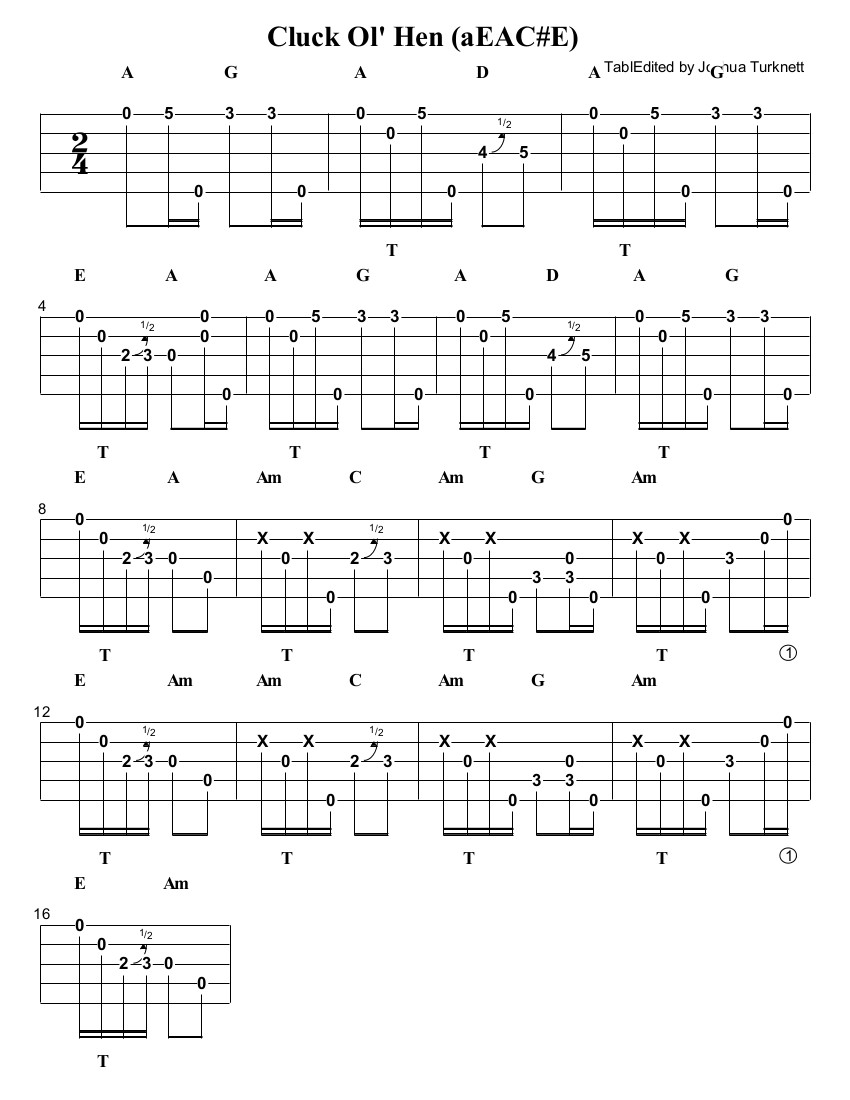Episode 5: “Cluck Ol‘ Hen”
Not only are we plucking our first chicken tune this go round, but we also happen to be venturing into our first “modal” tune. Now, although a very select few individuals have returned from the darkest recesses of musical theorization and unlocked the true meaning of “modal”, for our purposes all you really must know is that they sound kind of ancient and spooky, and you sometimes will tune your 2nd string up a half tone to play them.
Cluck Ol Hen is most commonly presented in the key of A. Were we going to use a modal tuning for it, we’d tune our banjos to aEADE (aka standard G tuning with the 2nd string up a half tone to C and capoed at the second fret).
As it turns out, we won’t be using the modal tuning here. Though it can provide a nice added bit of spooky atmosphere when you’re playing your banjo solo, the truth is nobody can hear enough of that atmosphere when you’re playing in a jam to appreciate it, including you. I also find that, when trying to adapt my playing to that of others, it’s much easier to use a standard tuning. So we’ll save the modal tuned version for the solo stuff.
Step 1: Know Thy Melody
Now we need to find what makes this hen cluck. To get a good notion of her skeleton, let’s listen to a few versions from our friends over at the fiddle hangout (as much as they’d rather not admit it, even fiddlers enjoy a good chicken tune from time to time):
Step 2: Find the Melody Notes
Now that we’ve got a firm handle on this bird’s bones, we’ll find em on our banjo:
and here’s what that looks like in tab:

Well of course it’s simple. It’s a chicken tune, not Rachmaninoff’s Concerto Number 3!
Step 3: Add some clawhammery stuff
Now it’s time to make our hen walk. As per the usual protocol, we’ll play all the notes that occur on the downbeat as on the “bum” stroke, and then add a “ditty stroke” after each. In tab, it looks like this (chords listed above each measure).

And it sounds like this:
If we pair that up with a fiddle version of the tune, we find that we’ve already got a version of this tune that plays nicely with others.
Step 4: Decorate your bird
Now, every hen likes to feel fancy sometimes. At least, I imagine this to be true. At any rate, if you’d like to shine her up a bit, feel free to do whatever it takes to suit your whims. If you’ve got a particular fiddle version you like, try to adapt your own arrangement to it. Or go ahead and see if you can get all the melody notes in. Here’s my fancier bird:
Here’s what she looks like in tab:

You’ll notice there are a few instances in my arrangement where I’m bending, or choking (you could say I choked my chicken, but let’s keep it clean please) the notes, indicated by the ½ sign in the tab. I think it adds a nice effect for this particular tune, and it also provides an outlet for any juvenile punning tendencies.
And here it is played alongside the fiddle:
Step 5: Practice smart
As with all the tunes in the old-time top 20, backup tracks are available over at oldtimejam.com. So head on over and make this bird dance!